iPhone X is increasingly making early appearances as Apple employees routinely carry around the new device and use it openly in public. If it had a less distinctive design, perhaps nobody would have noticed.
A notch above the rest
iPhone X stands out even in the dark, thanks to its polished stainless steel band (using materials research borrowed from Apple Watch) and its full-screen display that's about 20 percent taller than a standard iPhone 8. At the bottom end, it has no Home button, shifting all of its navigation buttons into gestures. At the top, the display wraps around the TrueDepth sensor array, creating a distinctive "notch" that is immediately identifying.
As AppleInsider reader Omarcast wrote, "if it wasn't for the notch no one will notice. The notch will be the new white headphones and home button. It will separate the iPhones from the rest."
That comment was on our Instagram of another iPhone X spotted in the wild this weekend in San Francisco (below top). Our first public spotting (below bottom) was just a week after the event, before iPhone 8 had even gone on sale. That means Apple has been getting in every minute of internal testing— in real-world circumstances— before it begins shipping the new phone to buyers.
Another spotting of iPhone X was recently posted to Reddit, depicting the new phone's Dynamic Wallpaper, an exclusive feature that presents animated backdrops (as opposed to Live Wallpapers, which present a Live Photo that depicts movement when deep pressed, introduced alongside Live Photo on iPhone 6s).
Apple unveiled iPhone X at its launch event for the LTE-equipped Apple Watch Series 3, Apple TV 4K and iPhone 8, introducing the new model as a sort of halo concept for the future, but already in production.
While iPhone 8 and 8 Plus models were made available a couple weeks after the launch (as is typical for new iPhones), iPhone X is slated to begin taking orders the last week of October, with units shipping to buyers in early November.
That timing gave Apple a period of exclusivity to launch iPhone 8 on its own alongside the new Watch. The less expensive iPhone 8 line introduces some of the same technologies iPhone X will have, including its pearlescent glass back supporting Qi wireless charging, support for fast charging, Portrait Lighting and third-party Depth API, radically enhanced Slow Sync flash and the A11 Bionic processor that powers those features.
Critics complained that there were only around 100 people in line at Apple's largest flagship retail locations, a marked decrease from the late Aughts when lines for early iPhones circled around blocks and hundreds of buyers commonly spent most of their day standing in line to get the newest phone technology Apple was releasing.
iPhone X kicks off a new decade of iOS
Of course, a lot has changed over the past decade. Originally a massive jump over everything in the marketplace but priced at a hefty premium over basic phones, the first iPhone only appealed to a couple million early adopters. For years, Apple's phone couldn't even work on most U.S. carriers and wasn't officially sold in China. The game shifted from Apple being the upstart competitor that was seen as an underdog that "couldn't just walk in" to being the dominant player that kept inventing things that the rest of the industry scrambled to catch up with
A series of rivals launched plausible competitors: Microsoft rebranded as Windows Phone, Palm rebranded as webOS, Nokia took a stab at open sourcing Symbian and Google patched up the worst elements of JavaME on Linux to introduce Android.
Old phone makers like Sony and Samsung scrambled to license all of these platforms to deliver products that could stand up to the new iPhone, which kept siphoning off the top profits at the high-end of smartphones.
Despite lots of competition, iPhones kept selling as other platforms crashed and burned. Apple's iPhones emerged as "the real smartphone" that other phone makers could only copy as best as they could. The game shifted from Apple being the upstart competitor that was seen as an underdog that "couldn't just walk in" to being the dominant player that kept inventing things that the rest of the industry scrambled to catch up with, from 64-bit processors and Touch ID to today's Face ID, Portrait Lighting and Augmented Reality.
After every rival platform apart from Android died on the vine, it appeared that the entire collective manufacturing industry might be able to keep up a pace of innovation ahead of Apple under the Android umbrella. This began with exclusive introductions of LTE, Google's NFC-based Wallet for tap payments, 3D displays, curved screens and other features ranging from desirable to frivolous novelty.
However, Apple's incremental drive to deliver better iPhones matched the best features of its rivals while introducing original, superior work in silicon hardware, operating system design, developer frameworks, high-quality apps, integrated cloud services and industrial design.
Today, Apple sells well over 200 million iPhones per year compared to the 2 million sold in its first year. That's not reflected in retail store line length because those phones are now sold much more efficiently, online and through resellers. Apple's town hall locations are still important in showing off the company's products, but are not the primary way to get new releases to buyers.
iPhone raised the bar
A lot has changed since a prototype iPhone 4 was left behind in a bar, stolen and then sold to a rumor site. For starters, Apple is no longer competing against Microsoft (which is now recommending that mobile users buy whatever platform works for them, and builds a suite of its apps for iPhone and iPad, many exclusive to iOS).
Google is now actively courting iPhone users with its best apps rather than trying to hold them exclusive to Android. It knows most of the world's valuable mobile customers aren't going to switch away from iOS, so it must hold its position on iPhones in Search, Assistant, Maps and other services, even as it increasingly competes against Apple's first-party services.
Blackberry paid a premium to get into mobile device management for iPhones as its own hardware business went down in flames. Samsung has shifted from its failed goal to copy Apple in finished consumer hardware to one centered on its original relationship with Apple as a parts supplier, building the displays and memory for iPhones and striving to get Apple's fab business in competition with TSMC. There's no more question of whether iOS will remain viable as a platform, or whether developers will move exclusive titles to Android as Google once claimed would happen
Further, the market has also shifted. There's no more question of whether iOS will remain viable as a platform, or whether developers will move exclusive titles to Android as Google once claimed would happen. Instead, exclusive development is firmly rooted in iOS and its App Store, where titles actually sell for real money, rather than just downloading with an objective to show ads.
People who like to shop around and thoroughly experience products have already had years to try out iOS and Android. There is very little movement from iOS to Android, but significant switching still occurring from Android to iOS as users buy into the premium experience or abandon Android as a frustrating experiment in trying something new.
Last year's hype cycles for Android and Windows surrounding Virtual Reality, Mixed Reality, Machine Learning and Artificial Intelligence haven't resulted in killer products that shifted the industry. VR ended up being a low traction niche play that required a big investment in goggles and processing power.
Yet in one release, iOS 11 introduced high performance Machine Learning and Vision frameworks, and launched Augmented Reality as a platform, not just for the newest iPhones but for all A9-powered iOS devices sold over the last couple years, instantly giving Apple the largest installed base of powerful AR-capable devices.
We don't have to wonder whether developers will target the existing installed base of iOS users who are known to pay for apps, or whether they'll gamble all in on the potential market that may someday develop if enough users can be coaxed into dropping a couple thousand dollars on a VR experience.
At the same time, the highest end iPhone X can now do things with AR and 3D face detection that are exclusive, attractive and distinctive in ways that basic Android AR running on a few different flagship devices with unique hardware differences can't match and won't catch up to for years.
Just under one month from now, the general public will gain access to buying the future technology in iPhone X that's now being tested in the real world by Apple employees.
 Daniel Eran Dilger
Daniel Eran Dilger

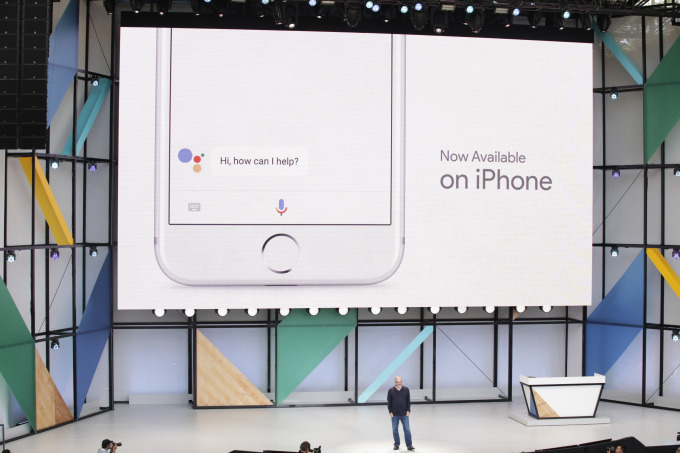
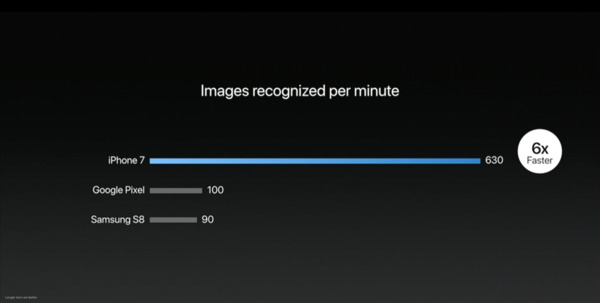







-m.jpg)






 Malcolm Owen
Malcolm Owen
 William Gallagher
William Gallagher
 Chip Loder
Chip Loder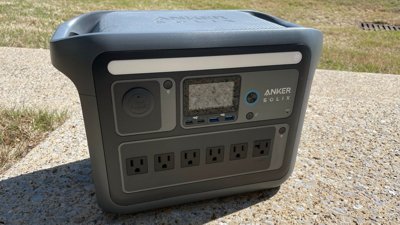
 Brian Patterson
Brian Patterson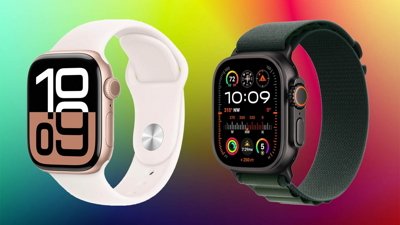
 Christine McKee
Christine McKee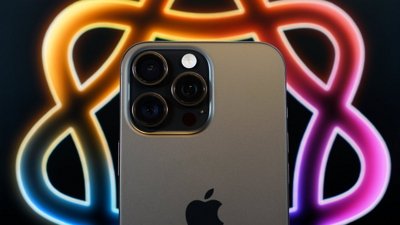
 Wesley Hilliard
Wesley Hilliard
 Amber Neely
Amber Neely
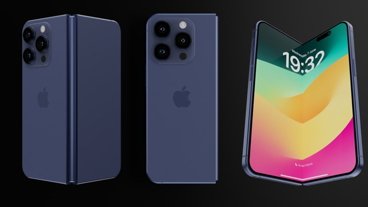
-m.jpg)






42 Comments
Is the space gray actually black or is it the traditional space gray?
I bought an iPhone 8. It looks like an iPhone and not an android phone.
Beautiful. Pretty soon Android clowns will copy the Notch ,and claim its the best.
The notch certainly grows on me; it is changing from a ugly duckling to a delight white swan; it is daring, it is to make things difficult and different and surprise; it is not settling; it is challenging; it stirs up the placid app community; it let the best developers shine through. Less than 3 weeks to go. Can’t wait.